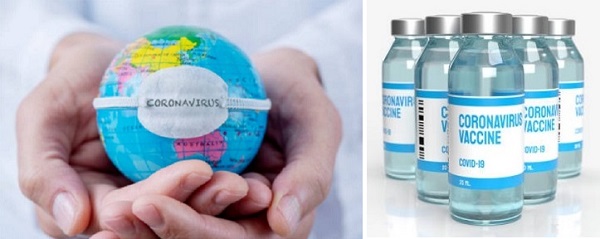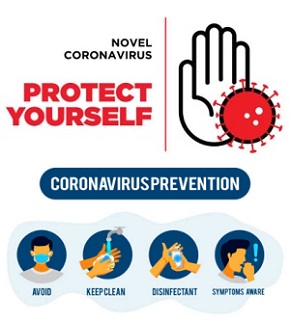Mar 31, 2025
Mar 31, 2025
As the news of four vaccine candidates claiming high efficacy levels in field trials cheered up the pandemic-struck globe, India, with more than 9 million confirmed Covid-19 cases, and a battered economy, is getting ready to vaccinate a population of more than a billion people, that too, twice. And that too, quite rapidly, for that is believed to be the sure-shot way to arrest the pandemic spread.

No doubt, India, as the world’s leading vaccine manufacturer, is in a better position vis-à-vis many other developing countries for accessing vaccines. Serum Institute of India alone is planning to produce a billion doses of Novavax vaccine by 2021 and Bharat Biotech Ltd is getting ready to produce its own vaccine soon, but challenges galore in the path: distribution logistics, supply of the right vaccine with a proven efficacy level with no accompanying side-effects and cost of the vaccine.
 As the Prime Minister rightly emphasized during his meeting with chief ministers, there is an urgent need to ramp up efforts to expand our existing cold-chain capacity. Simultaneously, a sense of confidence to capitalise on the existing “vast and experienced vaccination network” consisting of 27,000 cold chain points, 76,000 cold chain equipment, 700 reefer vans, 55,000 cold chain handlers and 2.5 million health workers, which is ranked within 51-75 percentile range among 89 countries on effective vaccine management by the WHO-UNICEF global analysis report of 2018, for the current adult immunization programme against Covid-19, has also been expressed.
As the Prime Minister rightly emphasized during his meeting with chief ministers, there is an urgent need to ramp up efforts to expand our existing cold-chain capacity. Simultaneously, a sense of confidence to capitalise on the existing “vast and experienced vaccination network” consisting of 27,000 cold chain points, 76,000 cold chain equipment, 700 reefer vans, 55,000 cold chain handlers and 2.5 million health workers, which is ranked within 51-75 percentile range among 89 countries on effective vaccine management by the WHO-UNICEF global analysis report of 2018, for the current adult immunization programme against Covid-19, has also been expressed.
Though we have a robust vaccination network under our Universal Immunization Programme, there are many glitches on the way that need to be addressed immediately. For instance, there are disparities in the distribution of cold chain points across the states. In the states like Jharkhand, Uttar Pradesh and Bihar there is only one cold chain point to serve 100,000 people. As against this, the vaccine developed by Pfizer/BioNTech based on an m-RNA technology needs to be refrigerated to nearly –70 0C. Indeed, according to the WHO, Covid-19 vaccines that are under development can be grouped into three categories: one set requires storage temperatures between 2-8 0C, the second one requires –20 0C and the third category requires –70 0C. Our system is reported to be well equipped to handle vaccines to be stored between 2-8 0C, but any requirement above that particularly, –70 0C is near impossible to provide. And ensuring a consistent cold chain for mass immunization programme in a sprawling nation like ours, by itself will be a gigantic task.
Secondly, the timescale for delivering the Covid-19 vaccine to about 300 million people identified as the vulnerable group consisting of health workers, ancillary staff, sanitation workers, etc., by the end of August 2021 vastly differs from the ongoing universal immunization programme for children and women which staggers over an entire year. It makes a heavy demand on the software of the system. The first question is: Who will administer the Covid-19 vaccine? Who will train millions of people required for giving injections, disposing of the used syringes, monitoring the side effects, etc.? So, undertaking Covid-19 vaccination programme along with the ongoing universal immunization programme for children and women will be a daunting task.
Thirdly, Covid-19 immunization programme poses another unique challenge: identification of beneficiaries, ensuring their presence on the day of vaccination, documentation for administering second dose after a month, and monitoring them for side effects if any in between calls for an effective and efficient micro-level planning.
It is equally important that people have confidence in the vaccines for their uptake, more so in the light of Covid-19 vaccines being developed so rapidly and regulators are rushing through the laid-down procedures to speed up their delivery. Indeed, many of them are adopting many shortcuts for making them quickly available. And, unless enough number of people accept the vaccine, we cannot establish the level of “herd immunity” required to arrest the spread of Covid-19.
Cumulatively, the immunization programme against Corona virus appears to be a mammoth task. Nonetheless, experts in the system believe that in the light of these constraints, India needs to expand its public sector vaccine distribution network capacity by two to three times forthwith.
That said, we must also take into consideration the cost factor. The vaccines developed by both Pfizer and AstraZenca-Oxford are supposed to cost around $37-39 per dose, while the Sputnik of Russia may be made available at $20 per dose. The only silver lining is that the AsraZenca vaccine being manufactured by SII will be supplied at less than $3 per dose to the government and @Rs 1,000 a dose for private players. But to cover its entire population quickly and thereby break the pandemic, India needs to source the vaccine from even other producers, which means cost becomes another major constraint.
The overall scenario indicates that India has a daunting task ahead, and the business houses have a vital role to play in managing it. Corporates must chip in to assist government agencies in creating an efficient cold-storage chain to deliver vaccine across the country. They must also deploy their marketing programmes towards creating awareness among the public about the importance of the immunization programme being implemented, besides creating confidence in the vaccines chosen under the programme. It is only by joining all the right forces—both from private and public organizations—in the implementation of the programme that India can surmount these challenges successfully.
Next, citizens too have an equal responsibility in making the whole exercise a success: they must respond to the government’s plan under vaccination in a disciplined fashion. They must also heed to the advice of Dr Paul Offit, Professor of vaccinology, Perlman School of Medicine at the University of Pennsylvania said about vaccines: “People shouldn’t think of vaccines as the saviour. Vaccines are, along with hygienic measures, a way to get in control of this virus, but we need both. Vaccines are not going to be magical. … You can’t abandon one in favour of the other.”
Images (c) istock.com
12-Dec-2020
More by : Gollamudi Radha Krishna Murty